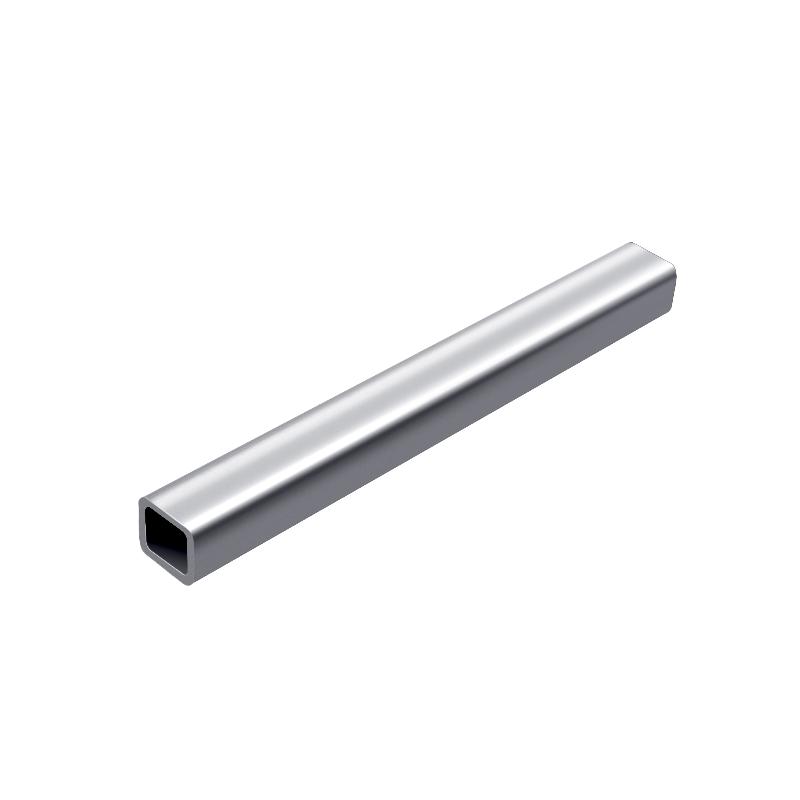CARBON STEELS – DEFINITON, TYPES, ADVANTAGES AND DISADVANTEGES Low Carbon Steel Tube
Apr . 22, 2024 11:20
Carbon steels or plain-carbon steels are steel grades with a carbon content of up to 2.1% by weight. It does not contain any minimum amount of other alloying elements, such as chromium, cobalt, molybdenum or tungsten. Nonetheless, it often contains manganese. However, the maximum amount of manganese in the metal should not exceed 1.65% by weight. Further, the amount of silicon and copper should be less than 0.6% by weight.

With the rise of the carbon amount in the steel, the hardness of the workpiece increases. However, the weldability and ductility reduces with higher carbon content.
TYPES OF CARBON STEEL
Plain-carbon steel grades are classified by their content of carbon into the three types: low-carbon steel, medium-carbon steel and high-carbon steel. The different grades can be distinguished by their carbon content, the microstructure and the properties:
|
|
Carbon content by weight in %
|
Microstructure
|
Properties
|
|
Low-carbon steel
(AISI 304, ASTM A815, AISI 316L)
|
< 0.25
|
Ferrite, pearlite
|
Low hardness, cost. High ductility, toughness, machinability, weldability.
|
|
Medium-carbon steel
(AISI 409, ASTM A29, SCM435)
|
0.25 – 0.60
|
Martensite
|
Low hardenability. Medium STRENGTH, ductility, toughness.
|
|
High-carbon steel
(AISI 440C, EN 10088-3)
|
0.60 – 1.25
|
Pearlite
|
High hardness, strength. Low ductility.
|
Carbon steel grades which contain more than 1.25% of carbon by weight are called ultra-high-carbon steels. These steel grades are used for mostly non-industrial purposes, such as knives, axles or punches. These steel grades can be tempered to great hardness.
LOW-CARBON OR MILD STEEL
Due to the fact that low-carbon steels cannot be hardened by heat, the metal is usually treated by cold work. Furthermore, the material shows low tensile strength and hardness, though the mechanical properties can be improved through carburizing. On the other hand, low-carbon steels show high ductility, toughness, are cheap and easy to form. They are characterized by a carbon content of less than 0.25% by weight. Low-carbon steel is the most widely used grade. In Addition, it is also known as mild steel.
Low-carbon steels are widely used in the automobile industry. Further applications are:
-
Structural shapes
-
Pipes
-
Construction
-
Bridge components
MEDIUM-CARBON STEEL
Medium-carbon steel is characterized by a martensitic microstructure, which is achieved through heat treatment followed by quenching and tempering. The amount of carbon ranges between 0.25 – 0.65% by weight. Further, the manganese content lies between 0.60 – 1.65% by weight.
Unlike low-carbon steels, medium-carbon steel grades can be heat treated, however only thin sections. The addition of alloying elements such as chromium, nickel or molybdenum can improve the ability of such steel grades to be heat treated.
In Comparison to low-carbon steel, medium-steel grades show greater strength. However, low-carbon steel excels in ductility and toughness.
Due to the combination of high strength, wear resistance and toughness, medium-carbon steels are used for railway tracks. Further applications are:
-
Train wheels
-
Crankshafts
-
Machinery parts
HIGH-CARBON STEEL
The amount of carbon in such steels ranges from 0.60 – 1.25% by weight. These steel grades show the highest hardness and toughness of all steel grades. Furthermore, they have the lowest ductility. In most cases, high-carbon steels are hardened and tempered. As a result, they are very wear resistant. This makes high-carbon steel perfect for the production of cutting tools.
ADVANTAGES AND DISADVANTAGES
In comparison to other materials, carbon steel show many benefits:
-
Carbon steel is extremely durable. The shock resistance makes such steel grades very popular for the construction industry.
-
The resistance to fires, earthquakes and hurricanes makes carbon steels a great material for building homes and houses.
-
The fact that carbon steel is very easy to recycle makes it environmentally friendly.
-
Compared to other materials, carbon steel can be made very thin. As a consequence, it is very cost effective.
On the other hand, however, there are some disadvantages. Due to the low weldability, carbon steels can be difficult to work with. Furthermore, other steel grades often show better corrosion resistance.
DIFFERENCES BETWEEN STAINLESS AND CARBON STEEL
Both steel grades contain iron. However, the amount of carbon differs, which results in different melting points, durability and weldability. In addition, stainless steel has a high chromium content, which prevents corrosion. Due to the shiny look, stainless steel is typically used decoratively in construction, while carbon steel is mostly hidden.
 Afrikaans
Afrikaans  Albanian
Albanian  Amharic
Amharic  Arabic
Arabic  Armenian
Armenian  Azerbaijani
Azerbaijani  Basque
Basque  Belarusian
Belarusian  Bengali
Bengali  Bosnian
Bosnian  Bulgarian
Bulgarian  Catalan
Catalan  Cebuano
Cebuano  Corsican
Corsican  Croatian
Croatian  Czech
Czech  Danish
Danish  Dutch
Dutch  English
English  Esperanto
Esperanto  Estonian
Estonian  Finnish
Finnish  French
French  Frisian
Frisian  Galician
Galician  Georgian
Georgian  German
German  Greek
Greek  Gujarati
Gujarati  Haitian Creole
Haitian Creole  hausa
hausa  hawaiian
hawaiian  Hebrew
Hebrew  Hindi
Hindi  Miao
Miao  Hungarian
Hungarian  Icelandic
Icelandic  igbo
igbo  Indonesian
Indonesian  irish
irish  Italian
Italian  Japanese
Japanese  Javanese
Javanese  Kannada
Kannada  kazakh
kazakh  Khmer
Khmer  Rwandese
Rwandese  Korean
Korean  Kurdish
Kurdish  Kyrgyz
Kyrgyz  Lao
Lao  Latin
Latin  Latvian
Latvian  Lithuanian
Lithuanian  Luxembourgish
Luxembourgish  Macedonian
Macedonian  Malgashi
Malgashi  Malay
Malay  Malayalam
Malayalam  Maltese
Maltese  Maori
Maori  Marathi
Marathi  Mongolian
Mongolian  Myanmar
Myanmar  Nepali
Nepali  Norwegian
Norwegian  Norwegian
Norwegian  Occitan
Occitan  Pashto
Pashto  Persian
Persian  Polish
Polish  Portuguese
Portuguese  Punjabi
Punjabi  Romanian
Romanian  Samoan
Samoan  Scottish Gaelic
Scottish Gaelic  Serbian
Serbian  Sesotho
Sesotho  Shona
Shona  Sindhi
Sindhi  Sinhala
Sinhala  Slovak
Slovak  Slovenian
Slovenian  Somali
Somali  Spanish
Spanish  Sundanese
Sundanese  Swahili
Swahili  Swedish
Swedish  Tagalog
Tagalog  Tajik
Tajik  Tamil
Tamil  Tatar
Tatar  Telugu
Telugu  Thai
Thai  Turkish
Turkish  Turkmen
Turkmen  Ukrainian
Ukrainian  Urdu
Urdu  Uighur
Uighur  Uzbek
Uzbek  Vietnamese
Vietnamese  Welsh
Welsh  Bantu
Bantu  Yiddish
Yiddish  Yoruba
Yoruba  Zulu
Zulu 












